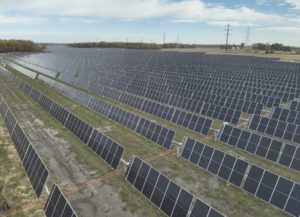
The power and utility sector underpins every part of modern life, from residential comfort to industrial productivity. Yet, as the global energy landscape evolves, so must the internal operations that keep these organizations running.
COMMENTARY
With total U.S. power use expected to reach around 4,189 billion kWh in 2025, and 4,278 billion kWh in 2026, energy companies can no longer rely on legacy systems and manual processes to meet growing demands. To thrive in this dynamic environment, energy companies are modernizing not only their front-end operations, but also the financial and accounting (F&A) processes that govern long-term planning, compliance, and capital investment. They are now turning to automation and artificial intelligence (AI) to help bridge the gap between growing complexity and constrained resources.
New Problems, Same Processes
Global electricity demand is expected to rise by 30% to 76% by 2050. This exponential growth places enormous pressure on financial systems to scale quickly and support strategic investments in infrastructure and innovation. But many organizations still rely on outdated, fragmented processes that leave them vulnerable to inefficiencies, errors, and compliance risks.
Currently, manual work and excessive spreadsheets are slowing the grid down. Nearly 47% of energy and utility companies continue to rely on spreadsheets as their primary tool for environmental, social, and governance (ESG) and financial data management. This approach not only limits efficiency, but also introduces risk through data silos and inconsistent reporting. Combined with a lack of integrated systems, these outdated processes make it difficult to produce accurate forecasts or respond swiftly to regulatory demands.
As a result, confidence in data collection and analytics is low, as only 36% of utilities feel confident in their ESG reporting. Poor data quality, siloed systems, and manual reporting processes make it difficult to meet stakeholder expectations or regulatory mandates.
How Automation Is Powering Finance Transformation in Utilities
Right now, more than half of utility-sector CFOs are expected to cut selling, general, and administrative (SG&A) expenses, even while managing large capital projects. This is where automation becomes an essential lever to do more with less.
The finance function, often seen as a back-office cost center, is emerging as a key driver of transformation. AI and automation tools are helping utility finance teams reduce costs, improve accuracy, and accelerate decision-making; ultimately positioning finance as a strategic partner to the business. Leading energy enterprises are already seeing results from three key areas:
- Centralize and Standardize. By unifying financial frameworks and data models, companies can reduce duplication, simplify compliance, and create a single source of truth that spans the enterprise. For example, World Fuel Services, a Miami-based fuel and energy solutions enterprise, centralized its F&A operations across more than 200 entities, reducing the time required for Sarbanes-Oxley Act (SOX) audit support by 50%, without compromising compliance.
- Automate at Scale. AI is accelerating tedious processes such as reconciliations, journal entries, and intercompany transactions. This not only shortens close cycles but also reduces manual errors and audit risks.
- Enable Real-Time Visibility. With continuous access to performance and variance data, finance teams can identify risks and opportunities earlier, enabling proactive decision-making and greater agility in a volatile market. This process helped Anglo American in particular, as the multinational mining organization overhauled its finance systems to streamline ESG reporting and intercompany transactions, improving both speed and accuracy.
More Demand Requires Smarter Technology
As global energy demand continues to surge and regulatory expectations intensify, the power and utility sector stands at a pivotal moment. The status quo—fragmented systems, spreadsheet-heavy workflows, and manual processes – is no longer sustainable. Finance teams must now become strategic enablers of operational resilience and long-term growth.
By investing in intelligent automation and integrated financial systems, organizations are moving beyond reactive reporting to proactive planning, gaining the agility to navigate disruption, optimize capital allocation, and meet stakeholder demands with confidence.
The future of energy isn’t just about generating more power; it’s about empowering finance to help lead the charge.
—Tammy Coley is Chief Transformation Officer at BlackLine.










